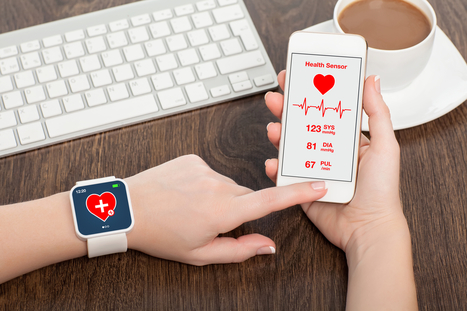Telehealth is emerging as a critical component of the healthcare crisis solution. Telehealth holds the promise to significantly impact some of the most challenging problems of our current healthcare system: access to care, cost-effective delivery, and distribution of limited providers. Telehealth can change the current paradigm of care and allow for improved access and improved health outcomes in cost-effective ways.
Telehealth increases access to healthcare:
- Remote patients can more easily obtain clinical services.
- Remote hospitals can provide emergency and intensive care services.
Telehealth improves health outcomes:
- Patients diagnosed and treated earlier often have improved outcomes and less costly treatments.
- Patients with Telehealth supported ICU’s have substantially reduced mortality rates, reduced complications, and reduced hospital stays.
Telehealth reduces healthcare costs:
- Home monitoring programs can reduce high cost hospital visits.
- High cost patient transfers for stroke and other emergencies are reduced.
Telehealth assists in addressing shortages and misdistribution of healthcare providers:
- Specialists can serve more patients using Telehealth technologies.
- Nursing shortages can be addressed using Telehealth technologies.
Telehealth supports clinical education programs:
- Rural clinicians can more easily obtain continuing education.
- Rural clinicians can more easily consult with specialists.
Telehealth improves support for patients and families:
- Patients can stay in their local communities and, when hospitalized away from home, can keep in contact with family and friends.
- Many telehealth applications empower patients to play an active role in their healthcare.
Telehealth helps the environment:
- Reducing extended travel to obtain necessary care reduces the related carbon footprint.
Telehealth improves organizational productivity:
- Employees can avoid absences from work when telehealth services are available on site or when employees can remotely participate in consultations about family members.
- These examples illustrate the some improved outcomes and cost savings being achieved by Telehealth and telehealth programs:
- Home monitoring of chronic diseases is reducing hospital visits by as much as 50% by keeping patients stable through daily monitoring.
- The national average for re-admission to hospitals within 30 days following a heart failure episode is 20%. Telehealth monitoring programs have reduced that level to less than 4%.
- Timely provision of treatments that effectively reverse the consequences of a stroke have risen from 15% to 85% due to the availability of telestroke programs.
Telehealth support to Intensive Care Units (often called eICUs) is reducing mortality rates by 15 – 30% and substantially reducing complications and length of stay.
Telehealth retinopathy screening programs support early identification of serious eye disease and reduce the incidence of blindness in diabetic patients.



 Your new post is loading...
Your new post is loading...








Quando si tratta di questioni di salute, è fondamentale sapere quali sono le farmacie buone e cattive.
Devi imparare cosa cercare in una farmacia per sapere se è quella giusta. Ricorda, hai a che fare con la vita, ecco perché devi stare attento a dove acquistare i tuoi farmaci e altre necessità farmaceutiche.
https://profarmaceutico.com/
https://profarmaceutico.com/Prodotto/a-215-ossicodone-actavis/
https://profarmaceutico.com/Prodotto/acquista-adderall-30mg/
https://profarmaceutico.com/Prodotto/acquista-adipex-online/
https://profarmaceutico.com/Prodotto/acquista-ossicodone-online/
https://profarmaceutico.com/Prodotto/acquista-oxycontin-online/
https://profarmaceutico.com/Prodotto/acquista-codeina-online/
https://profarmaceutico.com/Prodotto/acquista-adma-online/
https://profarmaceutico.com/Prodotto/acquista-ambien/
https://profarmaceutico.com/Prodotto/acquista-ativan-online/
https://profarmaceutico.com/Prodotto/acquista-botox-online/
https://profarmaceutico.com/Prodotto/acquista-cerotti-al-fentanil/
https://profarmaceutico.com/Prodotto/acquista-codeina-linctus-online/
https://profarmaceutico.com/Prodotto/acquista-demerol-online/
https://profarmaceutico.com/Prodotto/acquista-depalgo-online/
https://profarmaceutico.com/Prodotto/acquista-diazepam-online/
https://profarmaceutico.com/Prodotto/acquistare-idromorfone-online/
https://profarmaceutico.com/Prodotto/acquista-endocet-online/
https://profarmaceutico.com/Prodotto/acquista-eroina-bianca/
https://profarmaceutico.com/Prodotto/acquista-hydrocodone-online/
https://profarmaceutico.com/Prodotto/acquista-green-xanax/
https://profarmaceutico.com/Prodotto/acquista-instanyl-online/
https://profarmaceutico.com/Prodotto/acquista-l-ritalin-online/
https://profarmaceutico.com/Prodotto/acquista-metadone/
https://profarmaceutico.com/Prodotto/acquista-morfina-solfato/
https://profarmaceutico.com/Prodotto/acquista-opana-online/
https://profarmaceutico.com/Prodotto/acquista-percocet-online/
https://profarmaceutico.com/Prodotto/acquista-phentermine-online/
https://profarmaceutico.com/Prodotto/acquista-roxy-roxicodone-30-mg/
https://profarmaceutico.com/Prodotto/acquista-stilnox-online/
https://profarmaceutico.com/Prodotto/acquista-suboxone-8mg/
https://profarmaceutico.com/Prodotto/acquista-subutex-online/
https://profarmaceutico.com/Prodotto/acquista-vicodin-online/
https://profarmaceutico.com/Prodotto/acquista-vyvanse-online/
https://profarmaceutico.com/Prodotto/acquista-xanax-2mg/
https://profarmaceutico.com/Prodotto/acquistare-dapoxetina-online/
https://profarmaceutico.com/Prodotto/acquistare-rohypnol-2mg/
https://profarmaceutico.com/Prodotto/acquistare-sibutramina-online/
https://profarmaceutico.com/Prodotto/efedrina-hcl-in-polvere/
https://profarmaceutico.com/Prodotto/ephedrine-hcl-30mg/
https://profarmaceutico.com/Prodotto/sciroppo-di-metadone/
https://profarmaceutico.com/Prodotto/tramadolo-hcl-200mg/
Acheter MDMA Molly Ecstasy au Canada
L’ecstasy (MDMA) est à la fois une substance stimulante (de type amphétamine) et légèrement calmante (tranquillisante)
https://recherchechimique.com/
<a href="https://www.google.ca/url?q=https://recherchechimique.com/produit/extase-molly/" rel="dofollow">extase-molly</a>
<a href="https://www.google.ca/url?q=https://www.google.ca/url?q=https://recherchechimique.com/produit/bleu-et-jaune-ikea-mdma-220mg/" rel="dofollow">bleu-et-jaune-ikea-mdma-220mg</a>
<a href="https://www.google.ca/url?q=https://recherchechimique.com/produit/acheter-vyvanse-en-ligne/" rel="dofollow">acheter-vyvanse-en-ligne</a>
<a href="https://www.google.ca/url?q=https://recherchechimique.com/produit/brun-donkey-kong-mdma-260mg/" rel="dofollow">brun-donkey-kong-mdma-260mg</a>
<a href="https://www.google.ca/url?q=https://recherchechimique.com/produit/acheter-adderall-xr-en-ligne/" rel="dofollow">acheter-adderall-xr-en-ligne</a>
<a href="https://www.google.ca/url?q=https://recherchechimique.com/produit/acheter-du-cristal-de-mdma-en-ligne/" rel="dofollow">acheter-du-cristal-de-mdma-en-ligne</a>
<a href="https://www.google.ca/url?q=https://recherchechimique.com/produit/acheter-du-marbre-hash-en-ligne/" rel="dofollow">acheter-du-marbre-hash-en-ligne</a>
<a href="https://www.google.ca/url?q=https://recherchechimique.com/produit/acheter-3-meo-pcp-en-ligne/" rel="dofollow">acheter-3-meo-pcp-en-ligne</a>
<a href="https://www.google.ca/url?q=https://recherchechimique.com/produit/acheter-acquista-xanax-2mg-en-ligne/" rel="dofollow">acheter-acquista-xanax-2mg-en-ligne</a>
<a href="https://www.google.ca/url?q=https://recherchechimique.com/produit/acheter-de-lheroine-en-ligne/" rel="dofollow">acheter-de-lheroine-en-ligne</a>
<a href="https://www.google.ca/url?q=https://recherchechimique.com/produit/acheter-de-la-codeine-en-ligne/" rel="dofollow">acheter-de-la-codeine-en-ligne</a>
<a href="https://www.google.ca/url?q=https://recherchechimique.com/produit/acheter-de-la-methadone-en-ligne/" rel="dofollow">acheter-de-la-methadone-en-ligne</a>
<a href="https://www.google.ca/url?q=https://recherchechimique.com/produit/acheter-de-la-morphine-en-ligne/" rel="dofollow">acheter-de-la-morphine-en-ligne</a>
<a href="https://www.google.ca/url?q=https://recherchechimique.com/produit/acheter-hydrocodone-en-ligne/" rel="dofollow">acheter-hydrocodone-en-ligne</a>
<a href="https://www.google.ca/url?q=https://recherchechimique.com/produit/acheter-oxycontin-en-ligne/" rel="dofollow">acheter-oxycontin-en-ligne</a>
<a href="https://www.google.ca/url?q=https://recherchechimique.com/produit/acheter-percocet-en-ligne/" rel="dofollow">acheter-percocet-en-ligne</a>
<a href="https://www.google.ca/url?q=https://recherchechimique.com/produit/ayahuasca-dmt/" rel="dofollow">ayahuasca-dmt</a>
<a href="https://www.google.ca/url?q=https://recherchechimique.com/produit/bonbons-au-lsd/" rel="dofollow">bonbons-au-lsd</a>
<a href="https://www.google.ca/url?q=https://recherchechimique.com/produit/buvards-lsd/" rel="dofollow">buvards-lsd</a>
<a href="https://www.google.ca/url?q=https://recherchechimique.com/produit/comprimes-de-gel-de-lsd/" rel="dofollow">comprimes-de-gel-de-lsd</a>
<a href="https://www.google.ca/url?q=https://recherchechimique.com/produit/cristaux-de-ketamine/" rel="dofollow">cristaux-de-ketamine</a>
<a href="https://www.google.ca/url?q=https://recherchechimique.com/produit/deadhead-chimiste-dmt/" rel="dofollow">deadhead-chimiste-dmt</a>
<a href="https://www.google.ca/url?q=https://recherchechimique.com/produit/glace-methamphetamine/" rel="dofollow">glace-methamphetamine</a>
<a href="https://www.google.ca/url?q=https://recherchechimique.com/produit/ketamine-hcl/" rel="dofollow">ketamine-hcl</a>